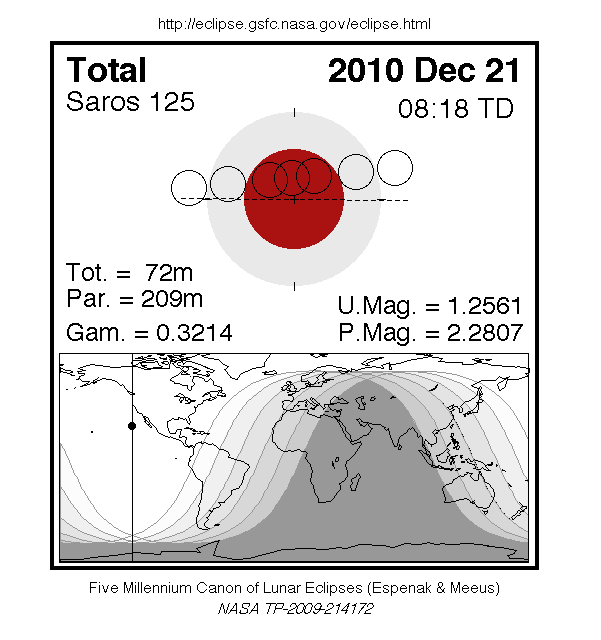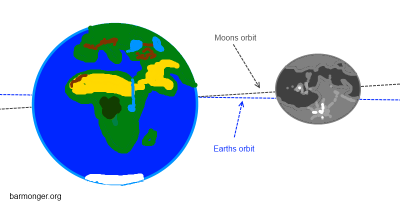Edit: I've uploaded my pictures of the eclipse here.
At that point the Moon will be to the north west, so look that way in the morning.
The proper eclipse begins at about 7:30 in the morning so if you do not have time to watch the sky at 8:40, you can see a partial eclipse for about an hour before that.
The Moon will enter the Earth's penumbra (see below) at around 6:30 and the umbra (see below) at about 7:30.
The total eclipse will begin at roughly 8:40 and last until 9:50.
Bear in mind that the Moon sets between 8:46 (in Copenhagen) and 9:01 (in Esbjerg) so you'll have to see it before that if you are in Denmark.
Depending on the amount of dust in the Earth's atmosphere (and the composition of it) the Moon will appear to become red/orange/copper in colour as it becomes dimmer.
This is a rare opportunity to see a total lunar eclipse so if possible do yourself a favour and check it out. Depending on the weather of course, we might have bad luck again and clouds all over.
For those interested I'll explain a bit about eclipses and why it happens.
The Earth's shadow and the Moon
I've talked a bit about the Moon's orbit around the Earth, their position relative to each other and the phases of the Moon before, and the lunar eclipse is related to all of that.
A full moon occurs whenever the Earth is between the Sun and the Moon. This means that the lit side of the Moon (the side facing the Sun) is also facing the Earth and we see it as a complete disk.
The Earth cast a shadow deep into space in the direction opposite of the Sun (like usual shadows). Because of the atmosphere around the Earth, the light get diffused a bit and the edge if the shadow isn't a hard line but more like a gradient from dark to light.
If you go outside and look at your own shadow, you'll notice the dame thing. The edges of the shadow appear blurred. This is called penumbra. 'Umbra' means shadow and denotes the dark area were the light is completely obscured (the true shadow), 'pen' means near or almost.
When the Moon moves into the shadow of the Earth, we get an eclipse. Because the Earth's shadow is always pointing away from the Sun, this can only happen when the Moon is full, i.e. the Earth is between the Moon and the Sun.
Because the orbits of the Earth and the Moon are tilted slightly in respect to each other, this doesn't happen every month, it can only occur when the orbit of the Earth and the Moon overlap on full moon.
The image below shows the upcoming eclipse and how the Moon moves from outside the Earth's shadow, to the penumbra (the grey ring) and lastly through the umbra (the red circle), where the Moon is completely in the dark (with respect to the Sun).
 | |
| Picture from eclipse.gsfc.nasa.gov |




0 comments:
Post a Comment